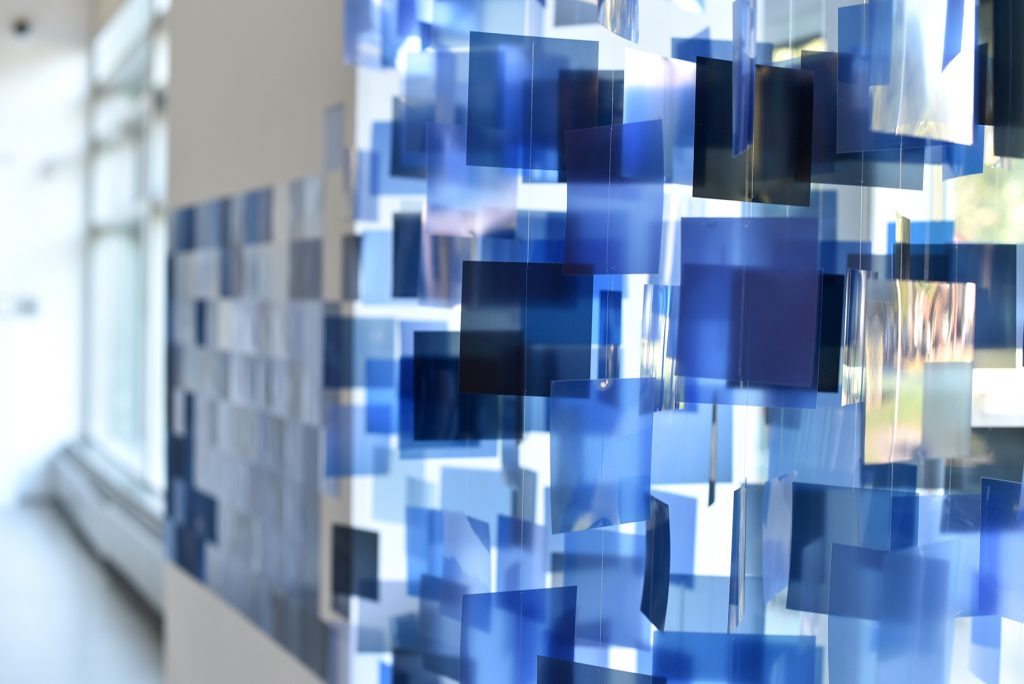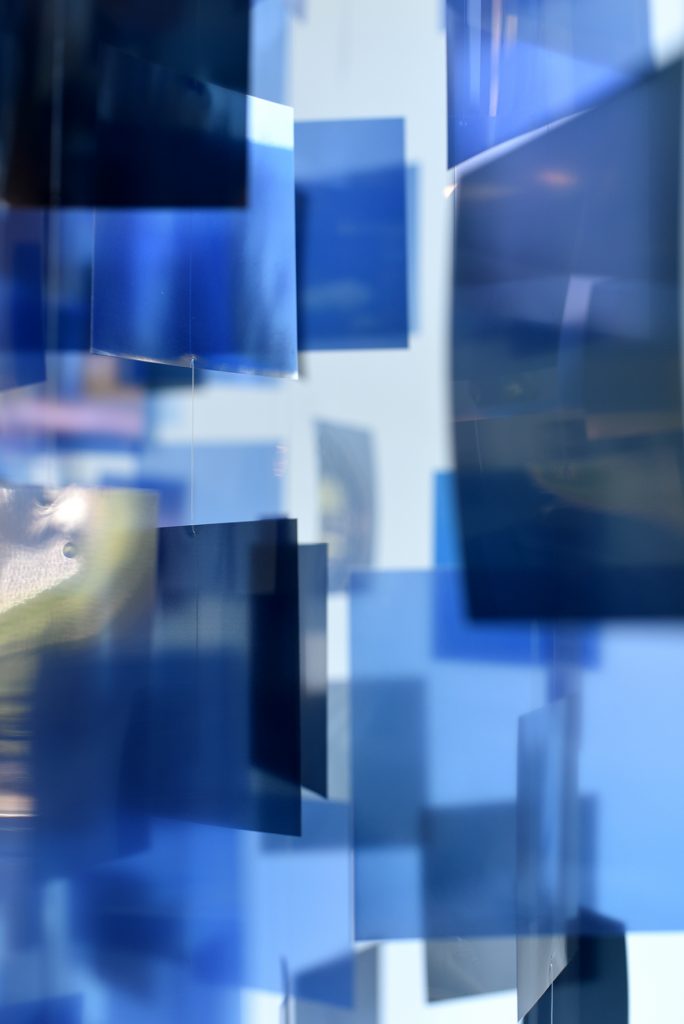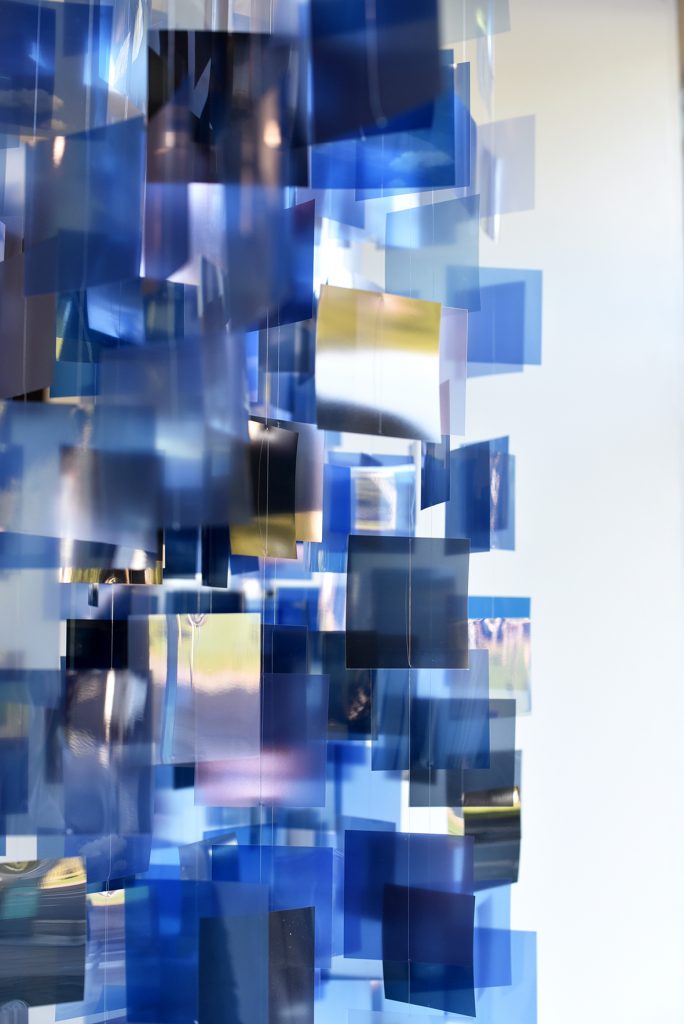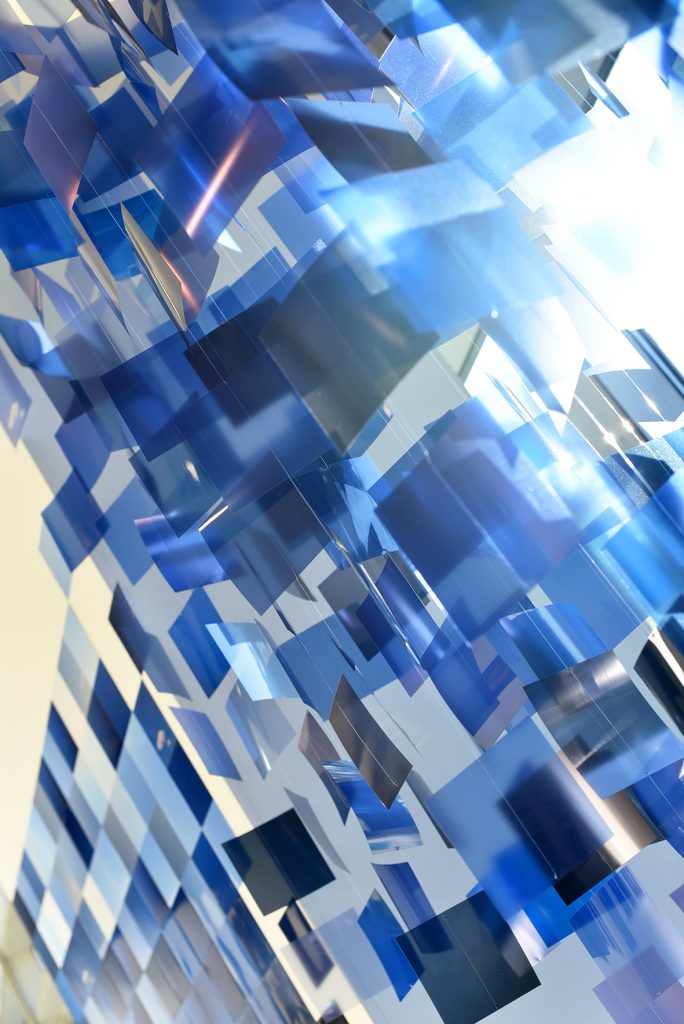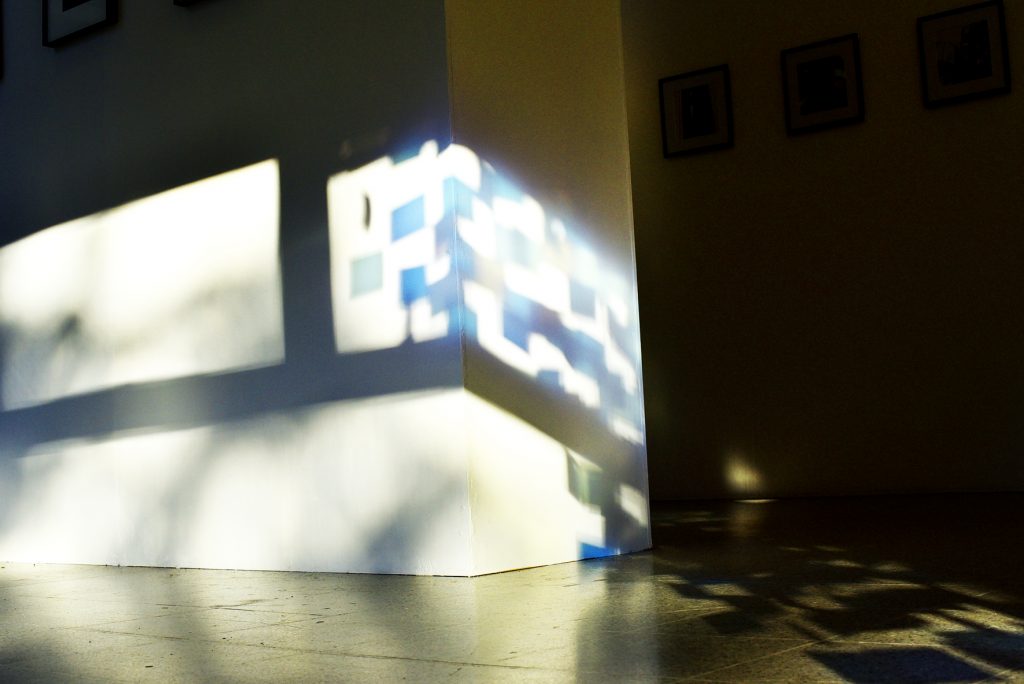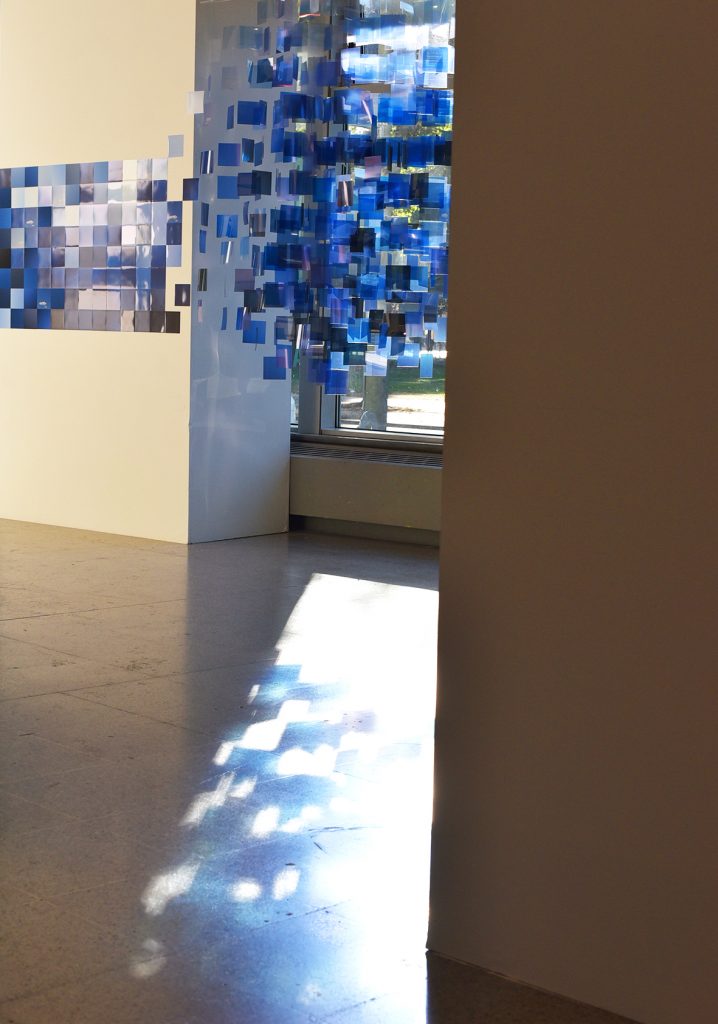Blue – a scattering
‘The world is blue at its edges and in its depths. This blue is the light that got lost. Light at the blue end of the spectrum does not travel the whole distance from the sun to us. It disperses among the molecules of the air, it scatters in water.
This light that does not touch us, does not travel the whole distance, the light that gets lost, gives us the beauty of the world, so much of which is in the color blue.
Some things we have only as long as they remain lost, some things are not lost only as long as they are distant’
Rebecca Solnit, A Field Guide to Getting Lost, 2005
This installation work moves outside of a two-dimensional static presentation into an exploration of the photograph as an experience in space and in time. The piece is working to broaden the sensorial reception of the photograph into something that can be ‘felt’ as well as seen. Rather than the trace, I saw the opportunity for the photographic act to work with fields of colour.
The choice of images is loosely based on the Cyanometer – De Saussure’s 53 degrees of blueness, and shows 53 images of the sky selected from many hundreds taken at different times of day, from dawn through to sunset as well as the night sky. The photographs were taken in locations around Toulouse, Arles and Sète in the South of France. De Saussure chose very specific locations for his measurements of blueness of the sky – most often at altitude where the air was clearer. I chose locations with very specific emotional resonances for my own exploration of degrees of blueness.
The images were cropped to a square within which the blue of the sky was its most pure. In many cases the red, orange, violet or golden glow at the lower edge of the image where the sky meets the earth was removed. Printed squares were then placed in a grid formation reproducing the pixels of a digital image. Using three different qualities of paper for the panel – matt, semi-gloss and high-gloss the grid presentation serves also as an exploration of the light absorption of different surfaces, and how we receive the same colour differently dependent on the way in which light is emitted from its surface.
Following from the panel of images, where the edge is occupied by the beginning of a scattering of images, the paper prints of blue give way to transparencies, strings of cut acetates hanging from a clear acrylic framework. These strings twist and turn with the movement of the air around them, throwing shadows and reflections on the surrounding surfaces. There is a layering of the acetates on different visual planes, multiplying the numbers of shades and intensities of the 53 degrees of blue photographed. With this mobile extension from the panel the installation works to describe a scattering of blue.
